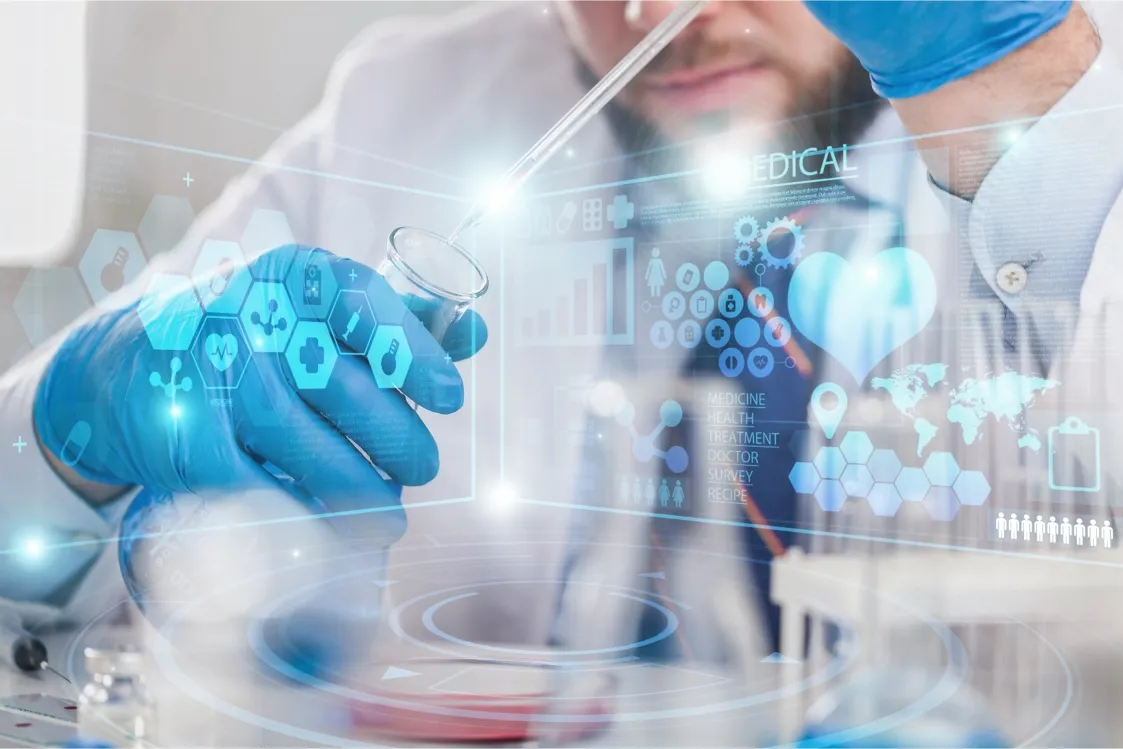Viral Vector and Plasmid DNA Market 2025: Comprehensive Analysis and Future Outlook
The viral vector and plasmid DNA market is poised for significant growth by 2025, fueled by transformative advancements in gene therapy, vaccine development, and biopharmaceutical innovation. These genetic delivery technologies are redefining treatment paradigms for a variety of diseases — from inherited disorders and cancers to infectious diseases — offering new hope for patients and shaping the future of healthcare. Understanding the critical factors driving this market, including innovation, regional dynamics, and strategic challenges, is essential for industry stakeholders and investors aiming to capitalize on emerging opportunities.
Key Market Drivers Shaping Growth
- The expanding prevalence of chronic and genetic diseases worldwide has dramatically increased demand for targeted and effective therapies. Viral vectors, which use modified viruses to deliver therapeutic genes into human cells, play an integral role in this transformation. They allow precise correction or replacement of defective genes, opening avenues for long-lasting treatments in areas such as rare genetic disorders and oncology.
- In parallel, plasmid DNA has gained considerable attention due to its safety, versatility, and rapid development cycle, particularly for DNA vaccines and gene therapies. Plasmid DNA-based products are proving vital in addressing emerging infectious diseases and in immunotherapy, thanks to their favorable immune response profile and manufacturing efficiency.
- The growing global emphasis on personalized medicine and regenerative therapies further drives market demand. Customized treatment solutions require sophisticated genetic delivery platforms like viral vectors and plasmid DNA to ensure optimal therapeutic outcomes. Additionally, favorable government policies and increased investments in biotech research and infrastructure are accelerating product development and commercialization, propelling market growth.
Innovations Accelerating Market Advancement
- Innovation remains the cornerstone of the viral vector and plasmid DNA market. Research efforts focus on overcoming technical hurdles such as vector immunogenicity, gene delivery efficiency, and manufacturing scalability.
- Next-generation viral vectors — including adeno-associated viruses (AAVs), lentiviruses, and retroviruses — are engineered to improve targeting accuracy, minimize immune reactions, and allow repeat dosing. These improvements enhance treatment safety and efficacy, enabling broader clinical application.
- On the plasmid DNA front, breakthroughs in vector design, stability, and delivery techniques are expanding therapeutic possibilities. Technologies like lipid nanoparticles, electroporation, and novel formulation methods increase gene uptake and expression, making DNA vaccines and gene therapies more effective and accessible.
- Additionally, artificial intelligence (AI) and machine learning integration are revolutionizing vector development by optimizing design, predicting immune responses, and accelerating clinical trial processes. These cutting-edge technologies are helping to reduce development timelines and improve personalized therapy outcomes.
Regional Market Dynamics and Growth Opportunities
The viral vector and plasmid DNA market is influenced by distinct regional factors such as healthcare infrastructure, regulatory landscapes, funding environments, and manufacturing capabilities.
- North America remains the market leader due to a mature biotech ecosystem, extensive clinical trial networks, and significant public and private investment in gene therapy research. The presence of leading pharmaceutical companies and regulatory agencies like the FDA facilitates faster product approvals and commercialization.
- Europe follows with its collaborative research networks, harmonized regulatory frameworks, and strong focus on orphan diseases and advanced therapies. Countries such as Germany, the UK, and France are hubs for clinical research and innovation in gene-based medicines.
- The Asia-Pacific region is rapidly emerging as a key growth driver. Countries like China, Japan, South Korea, and India are investing heavily in biotech infrastructure, regulatory reforms, and manufacturing capabilities. Growing patient populations, rising healthcare expenditure, and increasing government support position this region as a vibrant market with vast untapped potential.
- Emerging markets in Latin America, the Middle East, and Africa are also witnessing increased interest as they develop healthcare access and biotechnology capabilities. Localization of manufacturing and tailored regulatory strategies will be essential for market penetration in these regions.
Strategic Considerations for Market Participants
Success in the viral vector and plasmid DNA market requires navigating a complex array of scientific, regulatory, and commercial challenges.
- Collaborative partnerships between biotech firms, pharmaceutical companies, and academic institutions are critical to share expertise, mitigate risks, and accelerate innovation. Such alliances also help in navigating regulatory requirements and expanding clinical trial networks.
- Intellectual property management is a key strategic focus to protect innovations and maintain competitive advantage in a fast-evolving market.
- Companies must also prioritize scalable manufacturing solutions that ensure consistent quality while meeting increasing global demand. The complexity of viral vector and plasmid DNA production requires advanced technologies and infrastructure investments.
- Market expansion strategies must consider regional differences in healthcare access, reimbursement policies, and regulatory frameworks. Tailoring approaches to local needs, pricing models, and patient education can significantly enhance market penetration and adoption.
- Embracing patient-centric development models that incorporate real-world evidence and feedback can improve therapy acceptance and outcomes, creating long-term value for both patients and companies.
Conclusion: The Future of Viral Vector and Plasmid DNA Market
By 2025, the viral vector and plasmid DNA market is expected to be a cornerstone of advanced medical treatments, driving a paradigm shift toward personalized and gene-based healthcare solutions. Fueled by rising disease burdens, technological breakthroughs, and supportive regulatory frameworks, this market presents substantial opportunities for innovation and growth.
For healthcare market research professionals, investors, and industry players, understanding the evolving market drivers, innovation trends, and regional dynamics is critical for strategic decision-making. Companies that combine technological agility with strategic partnerships and regional insight will be well-positioned to lead in this rapidly evolving sector.
Ultimately, viral vector and plasmid DNA technologies are unlocking new possibilities for treating diseases that were once considered untreatable, offering hope and improved outcomes to millions of patients globally. This market is not just growing; it’s transforming the future of medicine.
NOTE:
Quants and Trends is proud to offer an extensive portfolio of meticulously researched healthcare market reports, numbering in the thousands. We also provide tailored customization services to ensure our insights align precisely with your strategic objectives and informational needs. For personalized assistance or to discuss your specific requirements, we invite you to get in touch with our team. We also encourage you to request a complimentary sample PDF report. Please visit our Sample Request Page to receive yours today.
Key Market Players
Brammer Bio
Oxford BioMedica
Cobra Biologics
FinVector
Lonza
BioReliance
MolMed
FUJIFILM Diosynth Biotechnologies
UniQure
Aldevron
Richter-Helm
Eurogentec
OBiO Technology
Yposkesi
Cell and Gene Therapy Catapult
MassBiologics
Biovian
VGXI
Gene Synthesis
PlasmidFactory
Jikai Gene
Segmentation By Type
Plasmid DNA
Viral Vector
Segmentation By Application
Cancer
Virus Infection
Hereditary Disease
Segmentation By Region
North America (United States, Canada, and Mexico)
Europe (Germany, France, UK, Russia, Italy, and Rest of Europe)
Asia-Pacific (China, Japan, South Korea, India, Southeast Asia, Australia and Rest of Asia-Pacific)
South America (Brazil, Argentina and Rest of South America)
Middle East & Africa (Turkey, Saudi Arabia, UAE, Rest of Middle East & Africa)
Market SWOT Analysis
What are the strengths of the Viral Vector and Plasmid DNA Market in 2025?
The increasing demand for gene therapies and vaccines, combined with advancements in viral vector technologies, significantly strengthens the market. These technologies enable highly efficient and targeted delivery of genetic material, offering potential in a variety of therapeutic applications, including cancer immunotherapies and rare genetic disorders.
What are the weaknesses in the Viral Vector and Plasmid DNA Market?
The complexity and high costs of manufacturing viral vectors and plasmid DNA can limit market growth. Additionally, challenges related to scalability, regulatory hurdles, and potential safety concerns can hinder widespread adoption and commercialization.
What are the opportunities in the Viral Vector and Plasmid DNA Market in 2025?
With the rising investment in genetic medicine and biotechnology, there is significant opportunity for market expansion. New applications in vaccines, gene-editing technologies like CRISPR, and the increasing number of clinical trials could fuel demand. Emerging markets and collaborations between biotechnology companies also present growth prospects.
What are the threats to the Viral Vector and Plasmid DNA Market?
The market faces potential threats from regulatory restrictions, especially concerning safety and ethical concerns in gene therapies. There is also competition from alternative gene delivery systems, such as mRNA-based technologies. Additionally, any disruption in the supply chain for key materials could delay or affect the production capabilities of viral vectors and plasmid DNA.
Market PESTEL Analysis
What are the political factors influencing the Viral Vector and Plasmid DNA Market in 2025?
Government regulations and policies surrounding gene therapies and genetic research play a critical role. Political stability and governmental support for biotech research, as well as funding for healthcare initiatives, can drive growth. However, political opposition to certain genetic therapies may pose challenges in some regions.
How do economic factors impact the Viral Vector and Plasmid DNA Market?
The high cost of developing and manufacturing viral vectors and plasmid DNA could limit market access, especially in emerging economies. However, the increasing demand for advanced therapies and the potential cost savings in long-term healthcare solutions can encourage investment in these technologies, boosting the market.
What are the social factors affecting the Viral Vector and Plasmid DNA Market in 2025?
Public perception and acceptance of gene therapies play a significant role in market growth. Increasing awareness about genetic disorders and the benefits of gene-based treatments may foster demand. However, ethical concerns and societal debates over gene editing and therapy could impact public support and regulatory approval.
How do technological factors shape the Viral Vector and Plasmid DNA Market?
Advancements in genetic engineering, vector production, and delivery technologies are essential drivers of the market. Innovations in CRISPR, more efficient viral vector production methods, and improvements in plasmid DNA synthesis are enhancing the effectiveness and scalability of these technologies, opening up new therapeutic possibilities.
What environmental factors influence the Viral Vector and Plasmid DNA Market?
Environmental considerations related to the manufacturing processes of viral vectors and plasmid DNA, such as sustainability and waste management, are becoming increasingly important. Additionally, the rising importance of environmentally conscious production methods in the biotech industry could influence regulatory guidelines and market dynamics.
What legal factors are shaping the Viral Vector and Plasmid DNA Market?
Strict regulatory frameworks governing gene therapies and genetic research are crucial in determining the market's trajectory. Intellectual property rights, patents, and legal frameworks for clinical trials and approvals will significantly impact the pace of innovation. Compliance with global health standards and regulations is key for companies to enter international markets.
Market SIPOC Analysis
What are the suppliers in the Viral Vector and Plasmid DNA Market in 2025?
Suppliers in this market include biotech companies providing raw materials such as plasmids, viral vectors, and reagents. Contract manufacturers specializing in vector production, plasmid DNA synthesis, and gene therapy technologies also play a critical role, along with research institutions offering innovation and technical expertise.
Who are the inputs in the Viral Vector and Plasmid DNA Market?
Key inputs include genetic materials (plasmids and viral vectors), advanced manufacturing equipment, raw materials for culturing viral vectors, and skilled personnel in biotechnology. Research and development investment, regulatory frameworks, and technological advancements in gene therapy are essential for market growth.
What are the processes involved in the Viral Vector and Plasmid DNA Market?
The processes include the development and production of viral vectors and plasmid DNA, followed by rigorous testing, clinical trials, and regulatory approvals. The manufacturing process also encompasses scale-up production, quality control, and the distribution of finished products for use in gene therapies and other medical treatments.
What are the outputs in the Viral Vector and Plasmid DNA Market?
The outputs of this market are viral vectors and plasmid DNA used in gene therapies, vaccines, and research applications. These products enable targeted delivery of genetic material for therapeutic purposes, including the treatment of genetic disorders, cancer, and other diseases that can be treated with gene-based solutions.
Who are the customers in the Viral Vector and Plasmid DNA Market in 2025?
Customers include pharmaceutical and biotech companies, research institutions, healthcare providers, and contract research organizations (CROs) involved in developing and commercializing gene therapies. Additionally, hospitals and clinics adopting gene therapy treatments, as well as regulatory agencies overseeing the approval of gene-based treatments, are key stakeholders.
Market Porter's Five Forces
How strong is the threat of new entrants in the Viral Vector and Plasmid DNA Market?
The threat of new entrants is moderate. While the market offers significant growth opportunities, the high capital investment required for R&D, manufacturing facilities, and regulatory approvals creates substantial barriers. Additionally, established players already have strong intellectual property and expertise, which adds to the difficulty for new companies to enter the market.
How intense is the rivalry among existing competitors in the Viral Vector and Plasmid DNA Market?
Rivalry is high. The market is growing, but competition is fierce among established biotech firms, pharmaceutical companies, and contract manufacturing organizations. Companies are continuously striving to innovate, reduce production costs, and improve the efficiency of viral vector and plasmid DNA production, leading to price pressures and constant competition for market share.
What is the bargaining power of suppliers in the Viral Vector and Plasmid DNA Market?
The bargaining power of suppliers is moderate to high. The market relies on specialized suppliers for plasmids, viral vectors, and raw materials for manufacturing. As these inputs are critical to production and require high expertise, suppliers with unique technologies or intellectual property can exert significant influence, especially if they control key components or processes.
What is the bargaining power of buyers in the Viral Vector and Plasmid DNA Market?
The bargaining power of buyers is moderate. While there are limited numbers of suppliers and complex products involved, the growing number of gene therapy companies and increasing demand for viral vectors and plasmid DNA provides buyers with some leverage. However, the specialized nature of these products and the importance of quality and reliability often outweigh price concerns.
How strong is the threat of substitute products in the Viral Vector and Plasmid DNA Market?
The threat of substitutes is moderate. While there are alternative gene delivery methods, such as mRNA-based therapies and chemical or physical transfection methods, viral vectors and plasmid DNA remain the most effective and widely used solutions for many gene therapies. However, continued advancements in alternative technologies could pose a long-term threat as substitutes improve in efficacy.
Market Upstream Analysis
What are the key upstream factors influencing the Viral Vector and Plasmid DNA Market in 2025?
Key upstream factors include the availability and cost of raw materials, such as plasmids, viral vectors, and culture media used in manufacturing. Research advancements in genetic engineering and vector design also influence the upstream market by driving the development of more efficient and scalable production methods.
How does the supply chain impact the Viral Vector and Plasmid DNA Market?
The supply chain is critical, as viral vectors and plasmid DNA require precise and controlled manufacturing processes. Disruptions in the availability of raw materials, such as high-quality plasmids or vector components, can cause delays or increase production costs. Moreover, the need for specialized facilities and equipment for scale-up production adds complexity to the supply chain.
What role do suppliers play in the upstream dynamics of the Viral Vector and Plasmid DNA Market?
Suppliers of raw materials, such as plasmid DNA, viral vectors, and reagents, hold significant power in the upstream dynamics. They provide essential components needed for production, and their ability to meet quality standards, offer scalability, and ensure regulatory compliance directly affects the efficiency and success of gene therapy developments.
How do technological advancements impact upstream activities in this market?
Technological advancements in vector production techniques, such as improved virus packaging methods or enhanced plasmid DNA synthesis, streamline the manufacturing process, reduce costs, and increase scalability. Innovations in gene editing and gene delivery methods can further optimize upstream activities by improving product yield and reducing the time required for development.
What challenges do upstream stakeholders face in the Viral Vector and Plasmid DNA Market?
Upstream stakeholders face challenges such as the high costs associated with specialized raw materials, maintaining strict quality control, and the complexity of scaling up production while ensuring regulatory compliance. Additionally, reliance on complex and sensitive production technologies means that any failure in upstream processes can lead to significant delays or safety concerns for downstream applications.
Market Midstream Analysis
What are the key midstream factors in the Viral Vector and Plasmid DNA Market in 2025?
Key midstream factors include the manufacturing and processing of viral vectors and plasmid DNA. This stage involves the scaling-up of production from laboratory settings to large-scale manufacturing, quality control, and validation processes required for clinical trials. Ensuring consistent, high-quality production at scale is crucial for the success of gene therapies and vaccines.
How does the regulatory environment affect midstream activities in this market?
The regulatory environment significantly influences midstream activities. Companies must comply with stringent regulatory guidelines for Good Manufacturing Practices (GMP), as well as conduct extensive testing for safety and efficacy. Any changes or delays in regulatory approvals can affect timelines for clinical trials and product launches, impacting midstream processes.
What role do contract manufacturers play in the midstream phase?
Contract manufacturers play a vital role in midstream activities by providing specialized expertise and facilities for large-scale production of viral vectors and plasmid DNA. These companies help biotech firms overcome challenges related to production capacity, scalability, and compliance with regulatory standards, allowing them to focus on R&D and commercialization efforts.
What are the main challenges faced in the midstream phase of this market?
Challenges include maintaining consistency in large-scale production, managing high manufacturing costs, and ensuring compliance with evolving regulatory standards. Additionally, logistical complexities related to the supply of critical raw materials and the need for specialized equipment for production and storage can complicate midstream operations.
How do technological advancements impact midstream activities?
Technological advancements, such as automated production systems and improved viral vector purification methods, help optimize the midstream phase by increasing production efficiency, reducing costs, and ensuring better product quality. Innovations in bioprocessing and process optimization contribute to more scalable and cost-effective manufacturing, thus accelerating the delivery of gene therapies to the market.
Market Downstream Analysis
What are the key downstream factors in the Viral Vector and Plasmid DNA Market in 2025?
Key downstream factors include the distribution and commercialization of viral vectors and plasmid DNA in gene therapies, vaccines, and research applications. This stage also encompasses clinical trials, market approval, and the delivery of these products to healthcare providers and patients. Effective marketing and partnerships with pharmaceutical companies are also essential to reaching the target market.
How do regulatory approvals impact downstream activities in this market?
Regulatory approvals are critical in downstream activities, as the success of gene therapies and related products depends on meeting the requirements set by health authorities like the FDA or EMA. The approval process dictates timelines for product availability in the market and can influence the commercialization strategy, as well as the cost and accessibility of treatments.
What role do healthcare providers play in the downstream phase?
Healthcare providers, including hospitals, clinics, and specialized treatment centers, are essential in the downstream phase as they are responsible for administering gene therapies and vaccines to patients. They also play a key role in educating patients about treatment options and providing feedback on the effectiveness of these therapies, which can guide future developments.
What challenges are faced in the downstream phase of the Viral Vector and Plasmid DNA Market?
Challenges include the high cost of gene therapies, which can limit accessibility for patients, especially in developing regions. Market uptake may also be slowed by concerns over safety, long-term effectiveness, and the complexity of these treatments. Additionally, the availability of trained medical professionals to handle and administer advanced therapies is a limiting factor in some regions.
How do technological advancements affect downstream operations?
Technological advancements in gene therapy administration methods, such as improved delivery systems and patient monitoring tools, directly enhance downstream operations. These innovations improve patient outcomes, reduce treatment costs, and streamline the adoption of gene therapies. Additionally, advancements in digital health tools help with patient tracking, compliance, and the overall management of gene-based treatments.
Chapter 1, to describe Viral Vector and Plasmid DNA product scope, market overview, market estimation caveats and base year.
Chapter 2, to profile the top players of Viral Vector and Plasmid DNA, with revenue, gross margin and global market share of Viral Vector and Plasmid DNA from 2018 to 2023.
Chapter 3, the Viral Vector and Plasmid DNA competitive situation, revenue and global market share of top players are analyzed emphatically by landscape contrast.
Chapter 4 and 5, to segment the market size by Type and application, with consumption value and growth rate by Type, application, from 2018 to 2029.
Chapter 6, 7, 8, 9, and 10, to break the market size data at the country level, with revenue and market share for key countries in the world, from 2018 to 2023.and Viral Vector and Plasmid DNA market forecast, by regions, type and application, with consumption value, from 2024 to 2029.
Chapter 11, market dynamics, drivers, restraints, trends, Porters Five Forces analysis, and Influence of COVID-19 and Russia-Ukraine War
Chapter 12, the key raw materials and key suppliers, and industry chain of Viral Vector and Plasmid DNA.
Chapter 13, to describe Viral Vector and Plasmid DNA research findings and conclusion.
1 Market Overview
1.1 Product Overview and Scope of Viral Vector and Plasmid DNA
1.2 Market Estimation Caveats and Base Year
1.3 Classification of Viral Vector and Plasmid DNA by Type
1.3.1 Overview: Global Viral Vector and Plasmid DNA Market Size by Type: 2018 Versus 2022 Versus 2029
1.3.2 Global Viral Vector and Plasmid DNA Consumption Value Market Share by Type in 2022
1.3.3 Plasmid DNA
1.3.4 Viral Vector
1.4 Global Viral Vector and Plasmid DNA Market by Application
1.4.1 Overview: Global Viral Vector and Plasmid DNA Market Size by Application: 2018 Versus 2022 Versus 2029
1.4.2 Cancer
1.4.3 Virus Infection
1.4.4 Hereditary Disease
1.5 Global Viral Vector and Plasmid DNA Market Size & Forecast
1.6 Global Viral Vector and Plasmid DNA Market Size and Forecast by Region
1.6.1 Global Viral Vector and Plasmid DNA Market Size by Region: 2018 VS 2022 VS 2029
1.6.2 Global Viral Vector and Plasmid DNA Market Size by Region, (2018-2029)
1.6.3 North America Viral Vector and Plasmid DNA Market Size and Prospect (2018-2029)
1.6.4 Europe Viral Vector and Plasmid DNA Market Size and Prospect (2018-2029)
1.6.5 Asia-Pacific Viral Vector and Plasmid DNA Market Size and Prospect (2018-2029)
1.6.6 South America Viral Vector and Plasmid DNA Market Size and Prospect (2018-2029)
1.6.7 Middle East and Africa Viral Vector and Plasmid DNA Market Size and Prospect (2018-2029)
2 Company Profiles
2.1 Brammer Bio
2.1.1 Brammer Bio Details
2.1.2 Brammer Bio Major Business
2.1.3 Brammer Bio Viral Vector and Plasmid DNA Product and Solutions
2.1.4 Brammer Bio Viral Vector and Plasmid DNA Revenue, Gross Margin and Market Share (2018-2023)
2.1.5 Brammer Bio Recent Developments and Future Plans
2.2 Oxford BioMedica
2.2.1 Oxford BioMedica Details
2.2.2 Oxford BioMedica Major Business
2.2.3 Oxford BioMedica Viral Vector and Plasmid DNA Product and Solutions
2.2.4 Oxford BioMedica Viral Vector and Plasmid DNA Revenue, Gross Margin and Market Share (2018-2023)
2.2.5 Oxford BioMedica Recent Developments and Future Plans
2.3 Cobra Biologics
2.3.1 Cobra Biologics Details
2.3.2 Cobra Biologics Major Business
2.3.3 Cobra Biologics Viral Vector and Plasmid DNA Product and Solutions
2.3.4 Cobra Biologics Viral Vector and Plasmid DNA Revenue, Gross Margin and Market Share (2018-2023)
2.3.5 Cobra Biologics Recent Developments and Future Plans
2.4 FinVector
2.4.1 FinVector Details
2.4.2 FinVector Major Business
2.4.3 FinVector Viral Vector and Plasmid DNA Product and Solutions
2.4.4 FinVector Viral Vector and Plasmid DNA Revenue, Gross Margin and Market Share (2018-2023)
2.4.5 FinVector Recent Developments and Future Plans
2.5 Lonza
2.5.1 Lonza Details
2.5.2 Lonza Major Business
2.5.3 Lonza Viral Vector and Plasmid DNA Product and Solutions
2.5.4 Lonza Viral Vector and Plasmid DNA Revenue, Gross Margin and Market Share (2018-2023)
2.5.5 Lonza Recent Developments and Future Plans
2.6 BioReliance
2.6.1 BioReliance Details
2.6.2 BioReliance Major Business
2.6.3 BioReliance Viral Vector and Plasmid DNA Product and Solutions
2.6.4 BioReliance Viral Vector and Plasmid DNA Revenue, Gross Margin and Market Share (2018-2023)
2.6.5 BioReliance Recent Developments and Future Plans
2.7 MolMed
2.7.1 MolMed Details
2.7.2 MolMed Major Business
2.7.3 MolMed Viral Vector and Plasmid DNA Product and Solutions
2.7.4 MolMed Viral Vector and Plasmid DNA Revenue, Gross Margin and Market Share (2018-2023)
2.7.5 MolMed Recent Developments and Future Plans
2.8 FUJIFILM Diosynth Biotechnologies
2.8.1 FUJIFILM Diosynth Biotechnologies Details
2.8.2 FUJIFILM Diosynth Biotechnologies Major Business
2.8.3 FUJIFILM Diosynth Biotechnologies Viral Vector and Plasmid DNA Product and Solutions
2.8.4 FUJIFILM Diosynth Biotechnologies Viral Vector and Plasmid DNA Revenue, Gross Margin and Market Share (2018-2023)
2.8.5 FUJIFILM Diosynth Biotechnologies Recent Developments and Future Plans
2.9 UniQure
2.9.1 UniQure Details
2.9.2 UniQure Major Business
2.9.3 UniQure Viral Vector and Plasmid DNA Product and Solutions
2.9.4 UniQure Viral Vector and Plasmid DNA Revenue, Gross Margin and Market Share (2018-2023)
2.9.5 UniQure Recent Developments and Future Plans
2.10 Aldevron
2.10.1 Aldevron Details
2.10.2 Aldevron Major Business
2.10.3 Aldevron Viral Vector and Plasmid DNA Product and Solutions
2.10.4 Aldevron Viral Vector and Plasmid DNA Revenue, Gross Margin and Market Share (2018-2023)
2.10.5 Aldevron Recent Developments and Future Plans
2.11 Richter-Helm
2.11.1 Richter-Helm Details
2.11.2 Richter-Helm Major Business
2.11.3 Richter-Helm Viral Vector and Plasmid DNA Product and Solutions
2.11.4 Richter-Helm Viral Vector and Plasmid DNA Revenue, Gross Margin and Market Share (2018-2023)
2.11.5 Richter-Helm Recent Developments and Future Plans
2.12 Eurogentec
2.12.1 Eurogentec Details
2.12.2 Eurogentec Major Business
2.12.3 Eurogentec Viral Vector and Plasmid DNA Product and Solutions
2.12.4 Eurogentec Viral Vector and Plasmid DNA Revenue, Gross Margin and Market Share (2018-2023)
2.12.5 Eurogentec Recent Developments and Future Plans
2.13 OBiO Technology
2.13.1 OBiO Technology Details
2.13.2 OBiO Technology Major Business
2.13.3 OBiO Technology Viral Vector and Plasmid DNA Product and Solutions
2.13.4 OBiO Technology Viral Vector and Plasmid DNA Revenue, Gross Margin and Market Share (2018-2023)
2.13.5 OBiO Technology Recent Developments and Future Plans
2.14 Yposkesi
2.14.1 Yposkesi Details
2.14.2 Yposkesi Major Business
2.14.3 Yposkesi Viral Vector and Plasmid DNA Product and Solutions
2.14.4 Yposkesi Viral Vector and Plasmid DNA Revenue, Gross Margin and Market Share (2018-2023)
2.14.5 Yposkesi Recent Developments and Future Plans
2.15 Cell and Gene Therapy Catapult
2.15.1 Cell and Gene Therapy Catapult Details
2.15.2 Cell and Gene Therapy Catapult Major Business
2.15.3 Cell and Gene Therapy Catapult Viral Vector and Plasmid DNA Product and Solutions
2.15.4 Cell and Gene Therapy Catapult Viral Vector and Plasmid DNA Revenue, Gross Margin and Market Share (2018-2023)
2.15.5 Cell and Gene Therapy Catapult Recent Developments and Future Plans
2.16 MassBiologics
2.16.1 MassBiologics Details
2.16.2 MassBiologics Major Business
2.16.3 MassBiologics Viral Vector and Plasmid DNA Product and Solutions
2.16.4 MassBiologics Viral Vector and Plasmid DNA Revenue, Gross Margin and Market Share (2018-2023)
2.16.5 MassBiologics Recent Developments and Future Plans
2.17 Biovian
2.17.1 Biovian Details
2.17.2 Biovian Major Business
2.17.3 Biovian Viral Vector and Plasmid DNA Product and Solutions
2.17.4 Biovian Viral Vector and Plasmid DNA Revenue, Gross Margin and Market Share (2018-2023)
2.17.5 Biovian Recent Developments and Future Plans
2.18 VGXI
2.18.1 VGXI Details
2.18.2 VGXI Major Business
2.18.3 VGXI Viral Vector and Plasmid DNA Product and Solutions
2.18.4 VGXI Viral Vector and Plasmid DNA Revenue, Gross Margin and Market Share (2018-2023)
2.18.5 VGXI Recent Developments and Future Plans
2.19 Gene Synthesis
2.19.1 Gene Synthesis Details
2.19.2 Gene Synthesis Major Business
2.19.3 Gene Synthesis Viral Vector and Plasmid DNA Product and Solutions
2.19.4 Gene Synthesis Viral Vector and Plasmid DNA Revenue, Gross Margin and Market Share (2018-2023)
2.19.5 Gene Synthesis Recent Developments and Future Plans
2.20 PlasmidFactory
2.20.1 PlasmidFactory Details
2.20.2 PlasmidFactory Major Business
2.20.3 PlasmidFactory Viral Vector and Plasmid DNA Product and Solutions
2.20.4 PlasmidFactory Viral Vector and Plasmid DNA Revenue, Gross Margin and Market Share (2018-2023)
2.20.5 PlasmidFactory Recent Developments and Future Plans
2.21 Jikai Gene
2.21.1 Jikai Gene Details
2.21.2 Jikai Gene Major Business
2.21.3 Jikai Gene Viral Vector and Plasmid DNA Product and Solutions
2.21.4 Jikai Gene Viral Vector and Plasmid DNA Revenue, Gross Margin and Market Share (2018-2023)
2.21.5 Jikai Gene Recent Developments and Future Plans
3 Market Competition, by Players
3.1 Global Viral Vector and Plasmid DNA Revenue and Share by Players (2018-2023)
3.2 Market Share Analysis (2022)
3.2.1 Market Share of Viral Vector and Plasmid DNA by Company Revenue
3.2.2 Top 3 Viral Vector and Plasmid DNA Players Market Share in 2022
3.2.3 Top 6 Viral Vector and Plasmid DNA Players Market Share in 2022
3.3 Viral Vector and Plasmid DNA Market: Overall Company Footprint Analysis
3.3.1 Viral Vector and Plasmid DNA Market: Region Footprint
3.3.2 Viral Vector and Plasmid DNA Market: Company Product Type Footprint
3.3.3 Viral Vector and Plasmid DNA Market: Company Product Application Footprint
3.4 New Market Entrants and Barriers to Market Entry
3.5 Mergers, Acquisition, Agreements, and Collaborations
4 Market Size Segment by Type
4.1 Global Viral Vector and Plasmid DNA Consumption Value and Market Share by Type (2018-2023)
4.2 Global Viral Vector and Plasmid DNA Market Forecast by Type (2024-2029)
5 Market Size Segment by Application
5.1 Global Viral Vector and Plasmid DNA Consumption Value Market Share by Application (2018-2023)
5.2 Global Viral Vector and Plasmid DNA Market Forecast by Application (2024-2029)
6 North America
6.1 North America Viral Vector and Plasmid DNA Consumption Value by Type (2018-2029)
6.2 North America Viral Vector and Plasmid DNA Consumption Value by Application (2018-2029)
6.3 North America Viral Vector and Plasmid DNA Market Size by Country
6.3.1 North America Viral Vector and Plasmid DNA Consumption Value by Country (2018-2029)
6.3.2 United States Viral Vector and Plasmid DNA Market Size and Forecast (2018-2029)
6.3.3 Canada Viral Vector and Plasmid DNA Market Size and Forecast (2018-2029)
6.3.4 Mexico Viral Vector and Plasmid DNA Market Size and Forecast (2018-2029)
7 Europe
7.1 Europe Viral Vector and Plasmid DNA Consumption Value by Type (2018-2029)
7.2 Europe Viral Vector and Plasmid DNA Consumption Value by Application (2018-2029)
7.3 Europe Viral Vector and Plasmid DNA Market Size by Country
7.3.1 Europe Viral Vector and Plasmid DNA Consumption Value by Country (2018-2029)
7.3.2 Germany Viral Vector and Plasmid DNA Market Size and Forecast (2018-2029)
7.3.3 France Viral Vector and Plasmid DNA Market Size and Forecast (2018-2029)
7.3.4 United Kingdom Viral Vector and Plasmid DNA Market Size and Forecast (2018-2029)
7.3.5 Russia Viral Vector and Plasmid DNA Market Size and Forecast (2018-2029)
7.3.6 Italy Viral Vector and Plasmid DNA Market Size and Forecast (2018-2029)
8 Asia-Pacific
8.1 Asia-Pacific Viral Vector and Plasmid DNA Consumption Value by Type (2018-2029)
8.2 Asia-Pacific Viral Vector and Plasmid DNA Consumption Value by Application (2018-2029)
8.3 Asia-Pacific Viral Vector and Plasmid DNA Market Size by Region
8.3.1 Asia-Pacific Viral Vector and Plasmid DNA Consumption Value by Region (2018-2029)
8.3.2 China Viral Vector and Plasmid DNA Market Size and Forecast (2018-2029)
8.3.3 Japan Viral Vector and Plasmid DNA Market Size and Forecast (2018-2029)
8.3.4 South Korea Viral Vector and Plasmid DNA Market Size and Forecast (2018-2029)
8.3.5 India Viral Vector and Plasmid DNA Market Size and Forecast (2018-2029)
8.3.6 Southeast Asia Viral Vector and Plasmid DNA Market Size and Forecast (2018-2029)
8.3.7 Australia Viral Vector and Plasmid DNA Market Size and Forecast (2018-2029)
9 South America
9.1 South America Viral Vector and Plasmid DNA Consumption Value by Type (2018-2029)
9.2 South America Viral Vector and Plasmid DNA Consumption Value by Application (2018-2029)
9.3 South America Viral Vector and Plasmid DNA Market Size by Country
9.3.1 South America Viral Vector and Plasmid DNA Consumption Value by Country (2018-2029)
9.3.2 Brazil Viral Vector and Plasmid DNA Market Size and Forecast (2018-2029)
9.3.3 Argentina Viral Vector and Plasmid DNA Market Size and Forecast (2018-2029)
10 Middle East & Africa
10.1 Middle East & Africa Viral Vector and Plasmid DNA Consumption Value by Type (2018-2029)
10.2 Middle East & Africa Viral Vector and Plasmid DNA Consumption Value by Application (2018-2029)
10.3 Middle East & Africa Viral Vector and Plasmid DNA Market Size by Country
10.3.1 Middle East & Africa Viral Vector and Plasmid DNA Consumption Value by Country (2018-2029)
10.3.2 Turkey Viral Vector and Plasmid DNA Market Size and Forecast (2018-2029)
10.3.3 Saudi Arabia Viral Vector and Plasmid DNA Market Size and Forecast (2018-2029)
10.3.4 UAE Viral Vector and Plasmid DNA Market Size and Forecast (2018-2029)
11 Market Dynamics
11.1 Viral Vector and Plasmid DNA Market Drivers
11.2 Viral Vector and Plasmid DNA Market Restraints
11.3 Viral Vector and Plasmid DNA Trends Analysis
11.4 Porters Five Forces Analysis
11.4.1 Threat of New Entrants
11.4.2 Bargaining Power of Suppliers
11.4.3 Bargaining Power of Buyers
11.4.4 Threat of Substitutes
11.4.5 Competitive Rivalry
11.5 Influence of COVID-19 and Russia-Ukraine War
11.5.1 Influence of COVID-19
11.5.2 Influence of Russia-Ukraine War
12 Industry Chain Analysis
12.1 Viral Vector and Plasmid DNA Industry Chain
12.2 Viral Vector and Plasmid DNA Upstream Analysis
12.3 Viral Vector and Plasmid DNA Midstream Analysis
12.4 Viral Vector and Plasmid DNA Downstream Analysis
13 Research Findings and Conclusion
14 Appendix
14.1 Methodology
14.2 Research Process and Data Source
14.3 Disclaimer
List of Tables
Table 1. Global Viral Vector and Plasmid DNA Consumption Value by Type, (USD Million), 2018 & 2022 & 2029
Table 2. Global Viral Vector and Plasmid DNA Consumption Value by Application, (USD Million), 2018 & 2022 & 2029
Table 3. Global Viral Vector and Plasmid DNA Consumption Value by Region (2018-2023) & (USD Million)
Table 4. Global Viral Vector and Plasmid DNA Consumption Value by Region (2024-2029) & (USD Million)
Table 5. Brammer Bio Company Information, Head Office, and Major Competitors
Table 6. Brammer Bio Major Business
Table 7. Brammer Bio Viral Vector and Plasmid DNA Product and Solutions
Table 8. Brammer Bio Viral Vector and Plasmid DNA Revenue (USD Million), Gross Margin and Market Share (2018-2023)
Table 9. Brammer Bio Recent Developments and Future Plans
Table 10. Oxford BioMedica Company Information, Head Office, and Major Competitors
Table 11. Oxford BioMedica Major Business
Table 12. Oxford BioMedica Viral Vector and Plasmid DNA Product and Solutions
Table 13. Oxford BioMedica Viral Vector and Plasmid DNA Revenue (USD Million), Gross Margin and Market Share (2018-2023)
Table 14. Oxford BioMedica Recent Developments and Future Plans
Table 15. Cobra Biologics Company Information, Head Office, and Major Competitors
Table 16. Cobra Biologics Major Business
Table 17. Cobra Biologics Viral Vector and Plasmid DNA Product and Solutions
Table 18. Cobra Biologics Viral Vector and Plasmid DNA Revenue (USD Million), Gross Margin and Market Share (2018-2023)
Table 19. Cobra Biologics Recent Developments and Future Plans
Table 20. FinVector Company Information, Head Office, and Major Competitors
Table 21. FinVector Major Business
Table 22. FinVector Viral Vector and Plasmid DNA Product and Solutions
Table 23. FinVector Viral Vector and Plasmid DNA Revenue (USD Million), Gross Margin and Market Share (2018-2023)
Table 24. FinVector Recent Developments and Future Plans
Table 25. Lonza Company Information, Head Office, and Major Competitors
Table 26. Lonza Major Business
Table 27. Lonza Viral Vector and Plasmid DNA Product and Solutions
Table 28. Lonza Viral Vector and Plasmid DNA Revenue (USD Million), Gross Margin and Market Share (2018-2023)
Table 29. Lonza Recent Developments and Future Plans
Table 30. BioReliance Company Information, Head Office, and Major Competitors
Table 31. BioReliance Major Business
Table 32. BioReliance Viral Vector and Plasmid DNA Product and Solutions
Table 33. BioReliance Viral Vector and Plasmid DNA Revenue (USD Million), Gross Margin and Market Share (2018-2023)
Table 34. BioReliance Recent Developments and Future Plans
Table 35. MolMed Company Information, Head Office, and Major Competitors
Table 36. MolMed Major Business
Table 37. MolMed Viral Vector and Plasmid DNA Product and Solutions
Table 38. MolMed Viral Vector and Plasmid DNA Revenue (USD Million), Gross Margin and Market Share (2018-2023)
Table 39. MolMed Recent Developments and Future Plans
Table 40. FUJIFILM Diosynth Biotechnologies Company Information, Head Office, and Major Competitors
Table 41. FUJIFILM Diosynth Biotechnologies Major Business
Table 42. FUJIFILM Diosynth Biotechnologies Viral Vector and Plasmid DNA Product and Solutions
Table 43. FUJIFILM Diosynth Biotechnologies Viral Vector and Plasmid DNA Revenue (USD Million), Gross Margin and Market Share (2018-2023)
Table 44. FUJIFILM Diosynth Biotechnologies Recent Developments and Future Plans
Table 45. UniQure Company Information, Head Office, and Major Competitors
Table 46. UniQure Major Business
Table 47. UniQure Viral Vector and Plasmid DNA Product and Solutions
Table 48. UniQure Viral Vector and Plasmid DNA Revenue (USD Million), Gross Margin and Market Share (2018-2023)
Table 49. UniQure Recent Developments and Future Plans
Table 50. Aldevron Company Information, Head Office, and Major Competitors
Table 51. Aldevron Major Business
Table 52. Aldevron Viral Vector and Plasmid DNA Product and Solutions
Table 53. Aldevron Viral Vector and Plasmid DNA Revenue (USD Million), Gross Margin and Market Share (2018-2023)
Table 54. Aldevron Recent Developments and Future Plans
Table 55. Richter-Helm Company Information, Head Office, and Major Competitors
Table 56. Richter-Helm Major Business
Table 57. Richter-Helm Viral Vector and Plasmid DNA Product and Solutions
Table 58. Richter-Helm Viral Vector and Plasmid DNA Revenue (USD Million), Gross Margin and Market Share (2018-2023)
Table 59. Richter-Helm Recent Developments and Future Plans
Table 60. Eurogentec Company Information, Head Office, and Major Competitors
Table 61. Eurogentec Major Business
Table 62. Eurogentec Viral Vector and Plasmid DNA Product and Solutions
Table 63. Eurogentec Viral Vector and Plasmid DNA Revenue (USD Million), Gross Margin and Market Share (2018-2023)
Table 64. Eurogentec Recent Developments and Future Plans
Table 65. OBiO Technology Company Information, Head Office, and Major Competitors
Table 66. OBiO Technology Major Business
Table 67. OBiO Technology Viral Vector and Plasmid DNA Product and Solutions
Table 68. OBiO Technology Viral Vector and Plasmid DNA Revenue (USD Million), Gross Margin and Market Share (2018-2023)
Table 69. OBiO Technology Recent Developments and Future Plans
Table 70. Yposkesi Company Information, Head Office, and Major Competitors
Table 71. Yposkesi Major Business
Table 72. Yposkesi Viral Vector and Plasmid DNA Product and Solutions
Table 73. Yposkesi Viral Vector and Plasmid DNA Revenue (USD Million), Gross Margin and Market Share (2018-2023)
Table 74. Yposkesi Recent Developments and Future Plans
Table 75. Cell and Gene Therapy Catapult Company Information, Head Office, and Major Competitors
Table 76. Cell and Gene Therapy Catapult Major Business
Table 77. Cell and Gene Therapy Catapult Viral Vector and Plasmid DNA Product and Solutions
Table 78. Cell and Gene Therapy Catapult Viral Vector and Plasmid DNA Revenue (USD Million), Gross Margin and Market Share (2018-2023)
Table 79. Cell and Gene Therapy Catapult Recent Developments and Future Plans
Table 80. MassBiologics Company Information, Head Office, and Major Competitors
Table 81. MassBiologics Major Business
Table 82. MassBiologics Viral Vector and Plasmid DNA Product and Solutions
Table 83. MassBiologics Viral Vector and Plasmid DNA Revenue (USD Million), Gross Margin and Market Share (2018-2023)
Table 84. MassBiologics Recent Developments and Future Plans
Table 85. Biovian Company Information, Head Office, and Major Competitors
Table 86. Biovian Major Business
Table 87. Biovian Viral Vector and Plasmid DNA Product and Solutions
Table 88. Biovian Viral Vector and Plasmid DNA Revenue (USD Million), Gross Margin and Market Share (2018-2023)
Table 89. Biovian Recent Developments and Future Plans
Table 90. VGXI Company Information, Head Office, and Major Competitors
Table 91. VGXI Major Business
Table 92. VGXI Viral Vector and Plasmid DNA Product and Solutions
Table 93. VGXI Viral Vector and Plasmid DNA Revenue (USD Million), Gross Margin and Market Share (2018-2023)
Table 94. VGXI Recent Developments and Future Plans
Table 95. Gene Synthesis Company Information, Head Office, and Major Competitors
Table 96. Gene Synthesis Major Business
Table 97. Gene Synthesis Viral Vector and Plasmid DNA Product and Solutions
Table 98. Gene Synthesis Viral Vector and Plasmid DNA Revenue (USD Million), Gross Margin and Market Share (2018-2023)
Table 99. Gene Synthesis Recent Developments and Future Plans
Table 100. PlasmidFactory Company Information, Head Office, and Major Competitors
Table 101. PlasmidFactory Major Business
Table 102. PlasmidFactory Viral Vector and Plasmid DNA Product and Solutions
Table 103. PlasmidFactory Viral Vector and Plasmid DNA Revenue (USD Million), Gross Margin and Market Share (2018-2023)
Table 104. PlasmidFactory Recent Developments and Future Plans
Table 105. Jikai Gene Company Information, Head Office, and Major Competitors
Table 106. Jikai Gene Major Business
Table 107. Jikai Gene Viral Vector and Plasmid DNA Product and Solutions
Table 108. Jikai Gene Viral Vector and Plasmid DNA Revenue (USD Million), Gross Margin and Market Share (2018-2023)
Table 109. Jikai Gene Recent Developments and Future Plans
Table 110. Global Viral Vector and Plasmid DNA Revenue (USD Million) by Players (2018-2023)
Table 111. Global Viral Vector and Plasmid DNA Revenue Share by Players (2018-2023)
Table 112. Breakdown of Viral Vector and Plasmid DNA by Company Type (Tier 1, Tier 2, and Tier 3)
Table 113. Market Position of Players in Viral Vector and Plasmid DNA, (Tier 1, Tier 2, and Tier 3), Based on Revenue in 2022
Table 114. Head Office of Key Viral Vector and Plasmid DNA Players
Table 115. Viral Vector and Plasmid DNA Market: Company Product Type Footprint
Table 116. Viral Vector and Plasmid DNA Market: Company Product Application Footprint
Table 117. Viral Vector and Plasmid DNA New Market Entrants and Barriers to Market Entry
Table 118. Viral Vector and Plasmid DNA Mergers, Acquisition, Agreements, and Collaborations
Table 119. Global Viral Vector and Plasmid DNA Consumption Value (USD Million) by Type (2018-2023)
Table 120. Global Viral Vector and Plasmid DNA Consumption Value Share by Type (2018-2023)
Table 121. Global Viral Vector and Plasmid DNA Consumption Value Forecast by Type (2024-2029)
Table 122. Global Viral Vector and Plasmid DNA Consumption Value by Application (2018-2023)
Table 123. Global Viral Vector and Plasmid DNA Consumption Value Forecast by Application (2024-2029)
Table 124. North America Viral Vector and Plasmid DNA Consumption Value by Type (2018-2023) & (USD Million)
Table 125. North America Viral Vector and Plasmid DNA Consumption Value by Type (2024-2029) & (USD Million)
Table 126. North America Viral Vector and Plasmid DNA Consumption Value by Application (2018-2023) & (USD Million)
Table 127. North America Viral Vector and Plasmid DNA Consumption Value by Application (2024-2029) & (USD Million)
Table 128. North America Viral Vector and Plasmid DNA Consumption Value by Country (2018-2023) & (USD Million)
Table 129. North America Viral Vector and Plasmid DNA Consumption Value by Country (2024-2029) & (USD Million)
Table 130. Europe Viral Vector and Plasmid DNA Consumption Value by Type (2018-2023) & (USD Million)
Table 131. Europe Viral Vector and Plasmid DNA Consumption Value by Type (2024-2029) & (USD Million)
Table 132. Europe Viral Vector and Plasmid DNA Consumption Value by Application (2018-2023) & (USD Million)
Table 133. Europe Viral Vector and Plasmid DNA Consumption Value by Application (2024-2029) & (USD Million)
Table 134. Europe Viral Vector and Plasmid DNA Consumption Value by Country (2018-2023) & (USD Million)
Table 135. Europe Viral Vector and Plasmid DNA Consumption Value by Country (2024-2029) & (USD Million)
Table 136. Asia-Pacific Viral Vector and Plasmid DNA Consumption Value by Type (2018-2023) & (USD Million)
Table 137. Asia-Pacific Viral Vector and Plasmid DNA Consumption Value by Type (2024-2029) & (USD Million)
Table 138. Asia-Pacific Viral Vector and Plasmid DNA Consumption Value by Application (2018-2023) & (USD Million)
Table 139. Asia-Pacific Viral Vector and Plasmid DNA Consumption Value by Application (2024-2029) & (USD Million)
Table 140. Asia-Pacific Viral Vector and Plasmid DNA Consumption Value by Region (2018-2023) & (USD Million)
Table 141. Asia-Pacific Viral Vector and Plasmid DNA Consumption Value by Region (2024-2029) & (USD Million)
Table 142. South America Viral Vector and Plasmid DNA Consumption Value by Type (2018-2023) & (USD Million)
Table 143. South America Viral Vector and Plasmid DNA Consumption Value by Type (2024-2029) & (USD Million)
Table 144. South America Viral Vector and Plasmid DNA Consumption Value by Application (2018-2023) & (USD Million)
Table 145. South America Viral Vector and Plasmid DNA Consumption Value by Application (2024-2029) & (USD Million)
Table 146. South America Viral Vector and Plasmid DNA Consumption Value by Country (2018-2023) & (USD Million)
Table 147. South America Viral Vector and Plasmid DNA Consumption Value by Country (2024-2029) & (USD Million)
Table 148. Middle East & Africa Viral Vector and Plasmid DNA Consumption Value by Type (2018-2023) & (USD Million)
Table 149. Middle East & Africa Viral Vector and Plasmid DNA Consumption Value by Type (2024-2029) & (USD Million)
Table 150. Middle East & Africa Viral Vector and Plasmid DNA Consumption Value by Application (2018-2023) & (USD Million)
Table 151. Middle East & Africa Viral Vector and Plasmid DNA Consumption Value by Application (2024-2029) & (USD Million)
Table 152. Middle East & Africa Viral Vector and Plasmid DNA Consumption Value by Country (2018-2023) & (USD Million)
Table 153. Middle East & Africa Viral Vector and Plasmid DNA Consumption Value by Country (2024-2029) & (USD Million)
Table 154. Viral Vector and Plasmid DNA Raw Material
Table 155. Key Suppliers of Viral Vector and Plasmid DNA Raw Materials
List of Figures
Figure 1. Viral Vector and Plasmid DNA Picture
Figure 2. Global Viral Vector and Plasmid DNA Consumption Value by Type, (USD Million), 2018 & 2022 & 2029
Figure 3. Global Viral Vector and Plasmid DNA Consumption Value Market Share by Type in 2022
Figure 4. Plasmid DNA
Figure 5. Viral Vector
Figure 6. Global Viral Vector and Plasmid DNA Consumption Value by Type, (USD Million), 2018 & 2022 & 2029
Figure 7. Viral Vector and Plasmid DNA Consumption Value Market Share by Application in 2022
Figure 8. Cancer Picture
Figure 9. Virus Infection Picture
Figure 10. Hereditary Disease Picture
Figure 11. Global Viral Vector and Plasmid DNA Consumption Value, (USD Million): 2018 & 2022 & 2029
Figure 12. Global Viral Vector and Plasmid DNA Consumption Value and Forecast (2018-2029) & (USD Million)
Figure 13. Global Market Viral Vector and Plasmid DNA Consumption Value (USD Million) Comparison by Region (2018 & 2022 & 2029)
Figure 14. Global Viral Vector and Plasmid DNA Consumption Value Market Share by Region (2018-2029)
Figure 15. Global Viral Vector and Plasmid DNA Consumption Value Market Share by Region in 2022
Figure 16. North America Viral Vector and Plasmid DNA Consumption Value (2018-2029) & (USD Million)
Figure 17. Europe Viral Vector and Plasmid DNA Consumption Value (2018-2029) & (USD Million)
Figure 18. Asia-Pacific Viral Vector and Plasmid DNA Consumption Value (2018-2029) & (USD Million)
Figure 19. South America Viral Vector and Plasmid DNA Consumption Value (2018-2029) & (USD Million)
Figure 20. Middle East and Africa Viral Vector and Plasmid DNA Consumption Value (2018-2029) & (USD Million)
Figure 21. Global Viral Vector and Plasmid DNA Revenue Share by Players in 2022
Figure 22. Viral Vector and Plasmid DNA Market Share by Company Type (Tier 1, Tier 2 and Tier 3) in 2022
Figure 23. Global Top 3 Players Viral Vector and Plasmid DNA Market Share in 2022
Figure 24. Global Top 6 Players Viral Vector and Plasmid DNA Market Share in 2022
Figure 25. Global Viral Vector and Plasmid DNA Consumption Value Share by Type (2018-2023)
Figure 26. Global Viral Vector and Plasmid DNA Market Share Forecast by Type (2024-2029)
Figure 27. Global Viral Vector and Plasmid DNA Consumption Value Share by Application (2018-2023)
Figure 28. Global Viral Vector and Plasmid DNA Market Share Forecast by Application (2024-2029)
Figure 29. North America Viral Vector and Plasmid DNA Consumption Value Market Share by Type (2018-2029)
Figure 30. North America Viral Vector and Plasmid DNA Consumption Value Market Share by Application (2018-2029)
Figure 31. North America Viral Vector and Plasmid DNA Consumption Value Market Share by Country (2018-2029)
Figure 32. United States Viral Vector and Plasmid DNA Consumption Value (2018-2029) & (USD Million)
Figure 33. Canada Viral Vector and Plasmid DNA Consumption Value (2018-2029) & (USD Million)
Figure 34. Mexico Viral Vector and Plasmid DNA Consumption Value (2018-2029) & (USD Million)
Figure 35. Europe Viral Vector and Plasmid DNA Consumption Value Market Share by Type (2018-2029)
Figure 36. Europe Viral Vector and Plasmid DNA Consumption Value Market Share by Application (2018-2029)
Figure 37. Europe Viral Vector and Plasmid DNA Consumption Value Market Share by Country (2018-2029)
Figure 38. Germany Viral Vector and Plasmid DNA Consumption Value (2018-2029) & (USD Million)
Figure 39. France Viral Vector and Plasmid DNA Consumption Value (2018-2029) & (USD Million)
Figure 40. United Kingdom Viral Vector and Plasmid DNA Consumption Value (2018-2029) & (USD Million)
Figure 41. Russia Viral Vector and Plasmid DNA Consumption Value (2018-2029) & (USD Million)
Figure 42. Italy Viral Vector and Plasmid DNA Consumption Value (2018-2029) & (USD Million)
Figure 43. Asia-Pacific Viral Vector and Plasmid DNA Consumption Value Market Share by Type (2018-2029)
Figure 44. Asia-Pacific Viral Vector and Plasmid DNA Consumption Value Market Share by Application (2018-2029)
Figure 45. Asia-Pacific Viral Vector and Plasmid DNA Consumption Value Market Share by Region (2018-2029)
Figure 46. China Viral Vector and Plasmid DNA Consumption Value (2018-2029) & (USD Million)
Figure 47. Japan Viral Vector and Plasmid DNA Consumption Value (2018-2029) & (USD Million)
Figure 48. South Korea Viral Vector and Plasmid DNA Consumption Value (2018-2029) & (USD Million)
Figure 49. India Viral Vector and Plasmid DNA Consumption Value (2018-2029) & (USD Million)
Figure 50. Southeast Asia Viral Vector and Plasmid DNA Consumption Value (2018-2029) & (USD Million)
Figure 51. Australia Viral Vector and Plasmid DNA Consumption Value (2018-2029) & (USD Million)
Figure 52. South America Viral Vector and Plasmid DNA Consumption Value Market Share by Type (2018-2029)
Figure 53. South America Viral Vector and Plasmid DNA Consumption Value Market Share by Application (2018-2029)
Figure 54. South America Viral Vector and Plasmid DNA Consumption Value Market Share by Country (2018-2029)
Figure 55. Brazil Viral Vector and Plasmid DNA Consumption Value (2018-2029) & (USD Million)
Figure 56. Argentina Viral Vector and Plasmid DNA Consumption Value (2018-2029) & (USD Million)
Figure 57. Middle East and Africa Viral Vector and Plasmid DNA Consumption Value Market Share by Type (2018-2029)
Figure 58. Middle East and Africa Viral Vector and Plasmid DNA Consumption Value Market Share by Application (2018-2029)
Figure 59. Middle East and Africa Viral Vector and Plasmid DNA Consumption Value Market Share by Country (2018-2029)
Figure 60. Turkey Viral Vector and Plasmid DNA Consumption Value (2018-2029) & (USD Million)
Figure 61. Saudi Arabia Viral Vector and Plasmid DNA Consumption Value (2018-2029) & (USD Million)
Figure 62. UAE Viral Vector and Plasmid DNA Consumption Value (2018-2029) & (USD Million)
Figure 63. Viral Vector and Plasmid DNA Market Drivers
Figure 64. Viral Vector and Plasmid DNA Market Restraints
Figure 65. Viral Vector and Plasmid DNA Market Trends
Figure 66. Porters Five Forces Analysis
Figure 67. Manufacturing Cost Structure Analysis of Viral Vector and Plasmid DNA in 2022
Figure 68. Manufacturing Process Analysis of Viral Vector and Plasmid DNA
Figure 69. Viral Vector and Plasmid DNA Industrial Chain
Figure 70. Methodology
Figure 71. Research Process and Data Source











